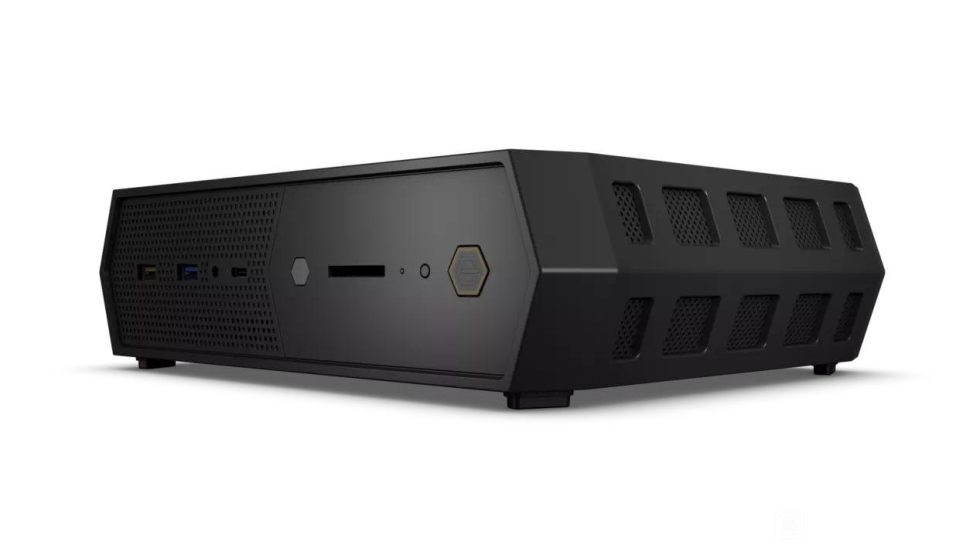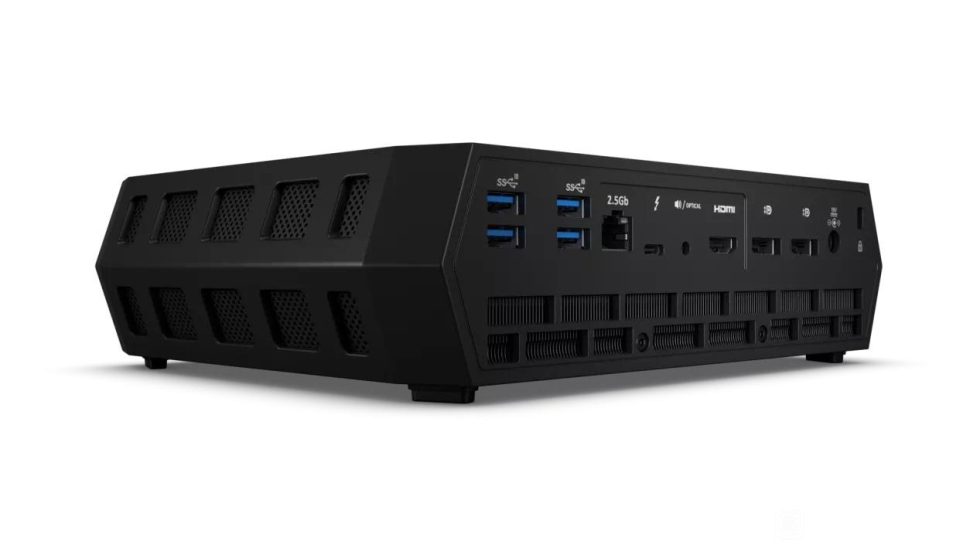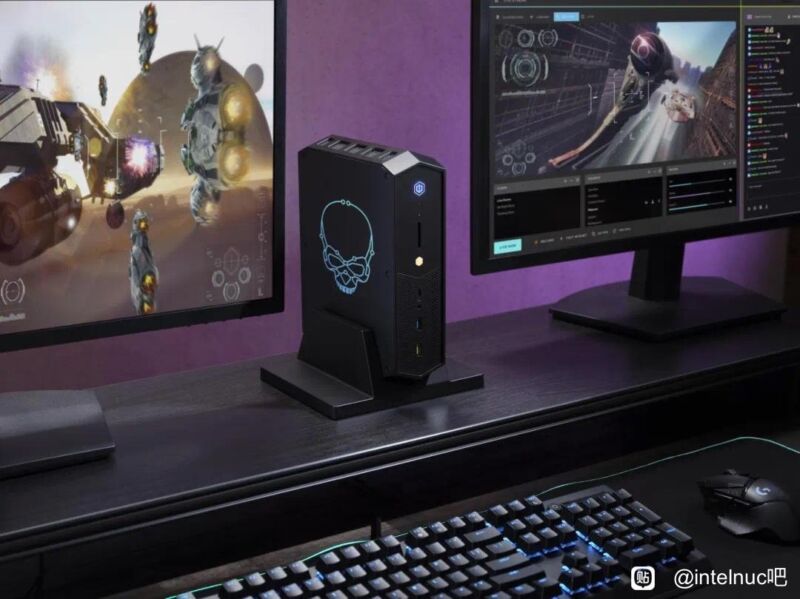Intel's "Phantom Canyon" NUC sits in between the company's standard square NUC mini PCs and the expandable NUC Extreme boxes in size, performance, and expandability. It's much smaller than the NUC Extreme boxes and still fits a dedicated GPU and more powerful CPU, but like the smallest NUCs, those components are laptop-class components that can't be upgraded.
The next-generation follow-up to Phantom Canyon is supposedly around the corner, according to plausible-looking leaked images and specs from a Chinese forum post (via Tom's Hardware). The new NUC, purportedly codenamed "Serpent Canyon," combines a Core i7-12700H CPU (six P-cores and eight E-cores) with one of Intel's Arc A770M GPUs, making it the first of these high-performance NUC boxes without an AMD or Nvidia GPU in it. The Phantom Canyon NUC uses a 4-core Core i7-1165G7 and an Nvidia RTX 2060 GPU, so Serpent Canyon should be quite a bit more powerful overall.

The Serpent Canyon photos make it look chunkier than the Phantom Canyon box, which as Tom's Hardware points out is a likely side effect of the higher-performance CPU and GPU—more power means more cooling and thus a larger case. But the PC should still offer impressive performance for its size, and its array of USB, Ethernet, Thunderbolt, HDMI, and DisplayPort outputs should accommodate most peoples' accessories and multi-monitor setups. Like Intel's other high-performance NUCs, it also has a lit-up skull on the side. This may or may not make it go faster.

Whether an Intel GPU is anything to get excited about remains to be seen; early independent benchmarks of the Arc A380, a mid-range offering that's currently only available in China, show it falling short of an Nvidia GTX 1650 and a Radeon RX 6400 in real-world gaming benchmarks. The GTX 1650 is more than three years old, and the RX 6400 is a cut-down version of the scathingly reviewed RX 6500 XT, so none of that is great news for Intel.
That said, the A770M could still be a respectable performer. Intel's drivers still have quite a bit of room for improvement, and compared to the A380, the A770M features a wider 256-bit memory interface, four times as much rendering hardware, and 16GB of VRAM instead of 6GB. That should give the A770M the firepower it needs to at least beat the RTX 2060 that shipped in the last-generation Phantom Canyon NUC, but we won't know for sure until we have hardware in hand.
If these NUC boxes have a major weakness, it's that they're considerably pricier than larger but more powerful mini ITX PC builds. We don't know what the Serpent Canyon NUC will cost once it's here, but the Phantom Canyon NUC starts at around $1,400 on Amazon and SimplyNUC.



3175x175(CURRENT).thumb.jpg.b05acc060982b36f5891ba728e6d953c.jpg)

Recommended Comments
There are no comments to display.
Join the conversation
You can post now and register later. If you have an account, sign in now to post with your account.
Note: Your post will require moderator approval before it will be visible.